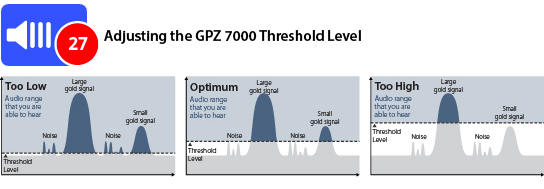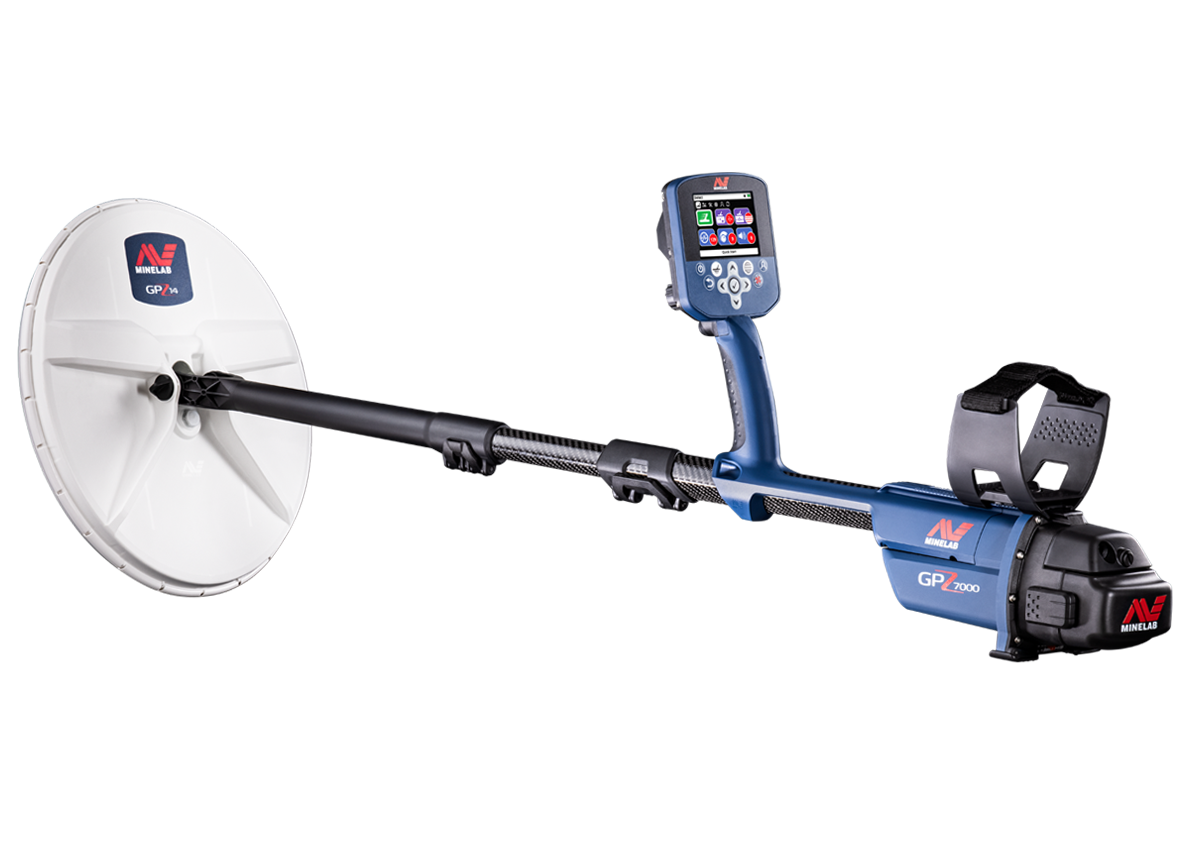Recently I took a trip up north to spend a few days detecting with a good friend and Minelab dealer Peter Cragg at Gold City Detecting and his detecting mate with the aim to helping them obtain some hands-on field experience and instruction with the amazing new GPZ 7000 with its ZVT technology.
Some nice gold was found on an old patch over a couple of half days, including a beaut half ounce piece found at depth right in the middle of the main patch. We ended up splitting over an ounce and a half of gold between us and had a ball to boot. Seeing how I was camped out, I stayed on for a bit longer and did some prospecting work of my own and also managed to get onto some decent gold.

Being March, and being so far north, the temperatures were still quite elevated, and worse, the humidity was almost unbearable, especially of an afternoon due to the monsoon trough hanging down very low bringing the threat of Cyclones with it. This also means that traditionally this time of year afternoon thunderstorm activity can build up and play havoc with our detectors, or should I say prior to the release of the GPZ 7000 it would have put a stop to proceedings, but not so much anymore. The GPZ 7000 is a MAJOR improvement over the GPX 5000 in this regard, so much so that you can now elect to use an Audio Smoothing OFF option all of the time, even in high EMI areas. This is equivalent to 20 on the Stabilizer of the GPX 5000 and has never really been an option before due to too much instability in the threshold of the GPX series for it to be effective.

When implementing Audio Smoothing on the GPZ 7000, be aware that the overall volume appears to decrease as you go from Off, to Low and then to High, which will tend to make you feel the need to increase the overall Volume of the GPZ to compensate. This can then negate the reason for using Audio Smoothing in the first place. The reason it does this is because adding Audio Smoothing removes information from the audio output of the detector, basically evening out variations in the threshold which then sounds like the overall Volume has been lowered.
On the afternoon in question, the EMI had built up to the point where even the GPZ was becoming problematic. Overall threshold response was still nice and smooth, but the lightning strikes a few hundred kilometres away were starting to play havoc with the detector’s audio. The lightning strike discharges were tricking the GPZ’s receiver into thinking they were targets. Normally in a situation like this it’s ‘down tools’ time and head for some shade and a cool drink, but not so with the GPZ! I decided to implement a method colloquially known as “Bogenes Settings” where you turn off the Threshold completely, elevate the Sensitivity and continue detecting. This method has been used very effectively with the GPX 5000 in extreme environments where ground noise and EMI are a major problem, or for people who do not like listening to threshold variations.
Threshold Off ALSO somewhat acts like a massive filter removing the vast amount of ground noise and overall threshold warbles. This requires the Sensitivity to be increased to compensate for the loss of information, but interestingly, target noises do punch through quite convincingly. I would NOT recommend this method for outright performance in general use, but it can be a very handy tool (similar to using Audio Smoothing) in providing another method for prospectors to use in their search for gold.

(Picture above from page 26 from the GPZ 7000 instruction manual)
Reverting to zero Threshold, max Sensitivity and sticking to High Yield/Difficult mode, I received a faint but positive low/high signal on the bank of a creek. The lightning strikes were tamed somewhat so I could continue working with just the occasional muffled ping or warble breaking through, but overall I was very impressed. Changing the Gold Mode to General, I was even more excited when the response also came through loud and clear, with an obvious repeatable signal response that suggested good depth and maybe a decent sized piece of gold. Removing a few inches of soil soon convinced me it was gold for sure. Out of curiosity, I decided to have a play with Audio Smoothing and was surprised by the amount of information that was lost even on the Low setting, so I decided to make the long walk back to the ATV to grab the video camera so I could demonstrate the effect of Audio Smoothing for people first hand. (Refer to video below)
Audio Smoothing should be used with a full understanding of the trade-offs involved. I’m not suggesting NOT to use Audio Smoothing, in fact the complete opposite because, as is shown in the video, the GPZ 7000 although simple to use, clearly demonstrates it has a plethora of options available for operators and their particular operating conditions worldwide. To sum up, f I had not persevered that day I would have missed a 20 gram piece at 23 inches. Experimenting further also gave me a fuller understanding of Audio Smoothing and its potential effects on an undug target. The GPZ 7000 is a wolf in sheep’s clothing with many facets to its character. I’m really enjoying learning this detector.Recently I took a trip up north to spend a few days detecting with a good friend and Minelab dealer Peter Cragg at Gold City Detecting and his detecting mate with the aim to helping them obtain some hands-on field experience and instruction with the amazing new GPZ 7000 with its ZVT technology.
Some nice gold was found on an old patch over a couple of half days, including a beaut half ounce piece found at depth right in the middle of the main patch. We ended up splitting over an ounce and a half of gold between us and had a ball to boot. Seeing how I was camped out, I stayed on for a bit longer and did some prospecting work of my own and also managed to get onto some decent gold.

Being March, and being so far north, the temperatures were still quite elevated, and worse, the humidity was almost unbearable, especially of an afternoon due to the monsoon trough hanging down very low bringing the threat of Cyclones with it. This also means that traditionally this time of year afternoon thunderstorm activity can build up and play havoc with our detectors, or should I say prior to the release of the GPZ 7000 it would have put a stop to proceedings, but not so much anymore. The GPZ 7000 is a MAJOR improvement over the GPX 5000 in this regard, so much so that you can now elect to use an Audio Smoothing OFF option all of the time, even in high EMI areas. This is equivalent to 20 on the Stabilizer of the GPX 5000 and has never really been an option before due to too much instability in the threshold of the GPX series for it to be effective.

When implementing Audio Smoothing on the GPZ 7000, be aware that the overall volume appears to decrease as you go from Off, to Low and then to High, which will tend to make you feel the need to increase the overall Volume of the GPZ to compensate. This can then negate the reason for using Audio Smoothing in the first place. The reason it does this is because adding Audio Smoothing removes information from the audio output of the detector, basically evening out variations in the threshold which then sounds like the overall Volume has been lowered.
On the afternoon in question, the EMI had built up to the point where even the GPZ was becoming problematic. Overall threshold response was still nice and smooth, but the lightning strikes a few hundred kilometres away were starting to play havoc with the detector’s audio. The lightning strike discharges were tricking the GPZ’s receiver into thinking they were targets. Normally in a situation like this it’s ‘down tools’ time and head for some shade and a cool drink, but not so with the GPZ! I decided to implement a method colloquially known as “Bogenes Settings” where you turn off the Threshold completely, elevate the Sensitivity and continue detecting. This method has been used very effectively with the GPX 5000 in extreme environments where ground noise and EMI are a major problem, or for people who do not like listening to threshold variations.
Threshold Off ALSO somewhat acts like a massive filter removing the vast amount of ground noise and overall threshold warbles. This requires the Sensitivity to be increased to compensate for the loss of information, but interestingly, target noises do punch through quite convincingly. I would NOT recommend this method for outright performance in general use, but it can be a very handy tool (similar to using Audio Smoothing) in providing another method for prospectors to use in their search for gold.

(Picture above from page 26 from the GPZ 7000 instruction manual)
Reverting to zero Threshold, max Sensitivity and sticking to High Yield/Difficult mode, I received a faint but positive low/high signal on the bank of a creek. The lightning strikes were tamed somewhat so I could continue working with just the occasional muffled ping or warble breaking through, but overall I was very impressed. Changing the Gold Mode to General, I was even more excited when the response also came through loud and clear, with an obvious repeatable signal response that suggested good depth and maybe a decent sized piece of gold. Removing a few inches of soil soon convinced me it was gold for sure. Out of curiosity, I decided to have a play with Audio Smoothing and was surprised by the amount of information that was lost even on the Low setting, so I decided to make the long walk back to the ATV to grab the video camera so I could demonstrate the effect of Audio Smoothing for people first hand. (Refer to video below)
Audio Smoothing should be used with a full understanding of the trade-offs involved. I’m not suggesting NOT to use Audio Smoothing, in fact the complete opposite because, as is shown in the video, the GPZ 7000 although simple to use, clearly demonstrates it has a plethora of options available for operators and their particular operating conditions worldwide. To sum up, f I had not persevered that day I would have missed a 20 gram piece at 23 inches. Experimenting further also gave me a fuller understanding of Audio Smoothing and its potential effects on an undug target. The GPZ 7000 is a wolf in sheep’s clothing with many facets to its character. I’m really enjoying learning this detector.





















Comments
To make comments you must be logged in, please note comments will not display immediately due to moderation